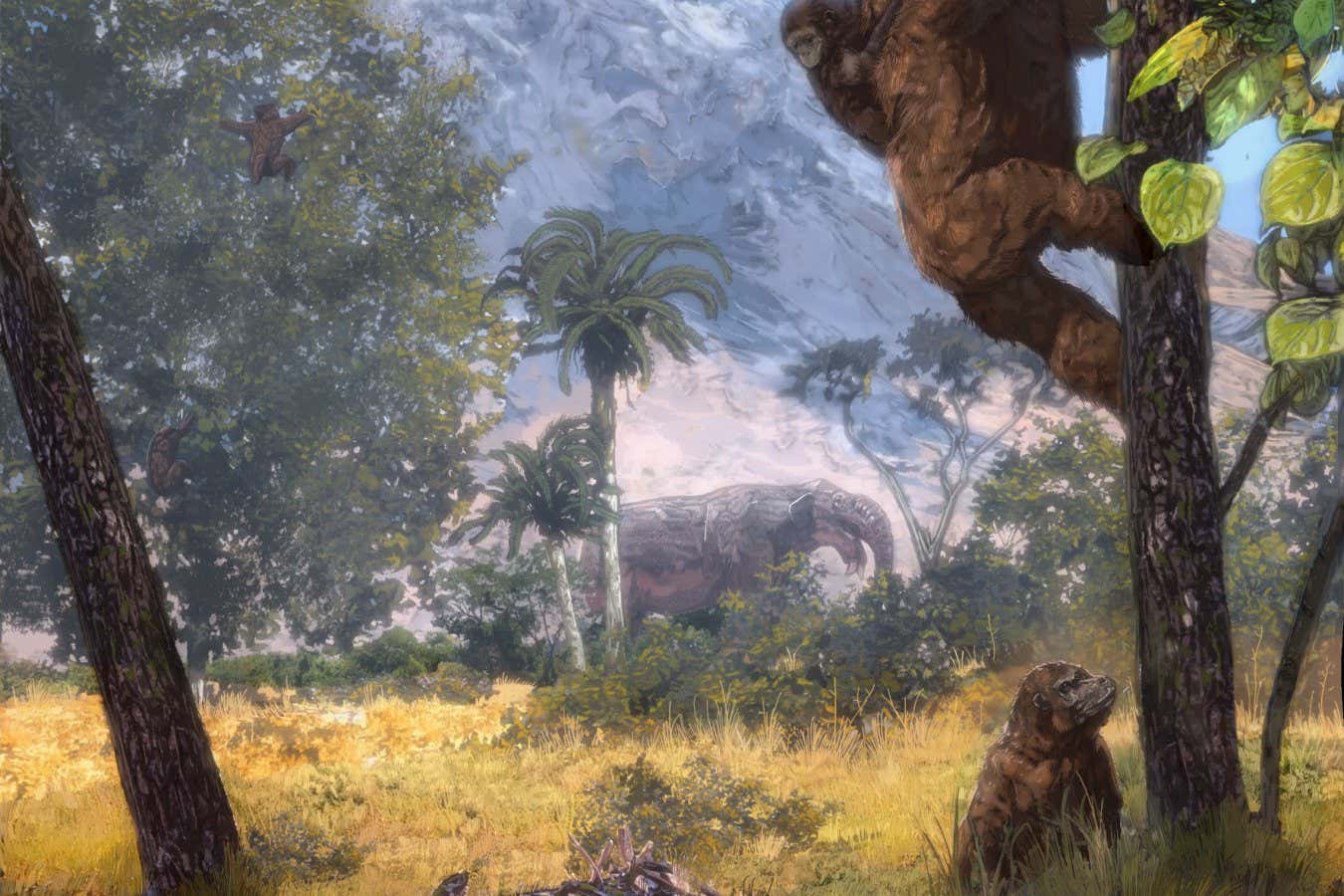Forests in eastern Africa started turning into grassland 10 million years earlier than previously thought, which may have driven the evolution of upright apes
By Michael Le Page
13 April 2023
Morotopithecus may have eaten more leaves than we thought, instead of fruit
Corbin Rainbolt
Dense forests in eastern Africa started to give way to open woodlands 10 million years earlier than previously thought, driving the evolution of upright apes that later gave rise to humans. That is the conclusion of a team that has been analysing everything from ancient soil to fossil ape bones at several sites in the region.
“Part of the reason why we feel very confident in this story is that it’s based on multiple lines of evidence,” says Laura MacLatchy at the University of Michigan.
It was thought that dense forests in eastern Africa only began to turn into grasslands from around 10 million years ago, and that this change is what made our ancestors come down from the trees and take to running across the savannah.
Advertisement
Read more:
Family tree of extinct apes reveals our early evolutionary history
But MacLatchy and her colleagues have now done analyses of fossil soils from several sites in Kenya and Uganda, revealing that C4 grasses were present as far back as 21 million years ago. C4 grasses, which are more productive and drought-resistant than other grasses, are the main type found in grasslands.
“We found grasses at almost every site we looked at,” says team member Daniel Peppe at Baylor University in Texas.
